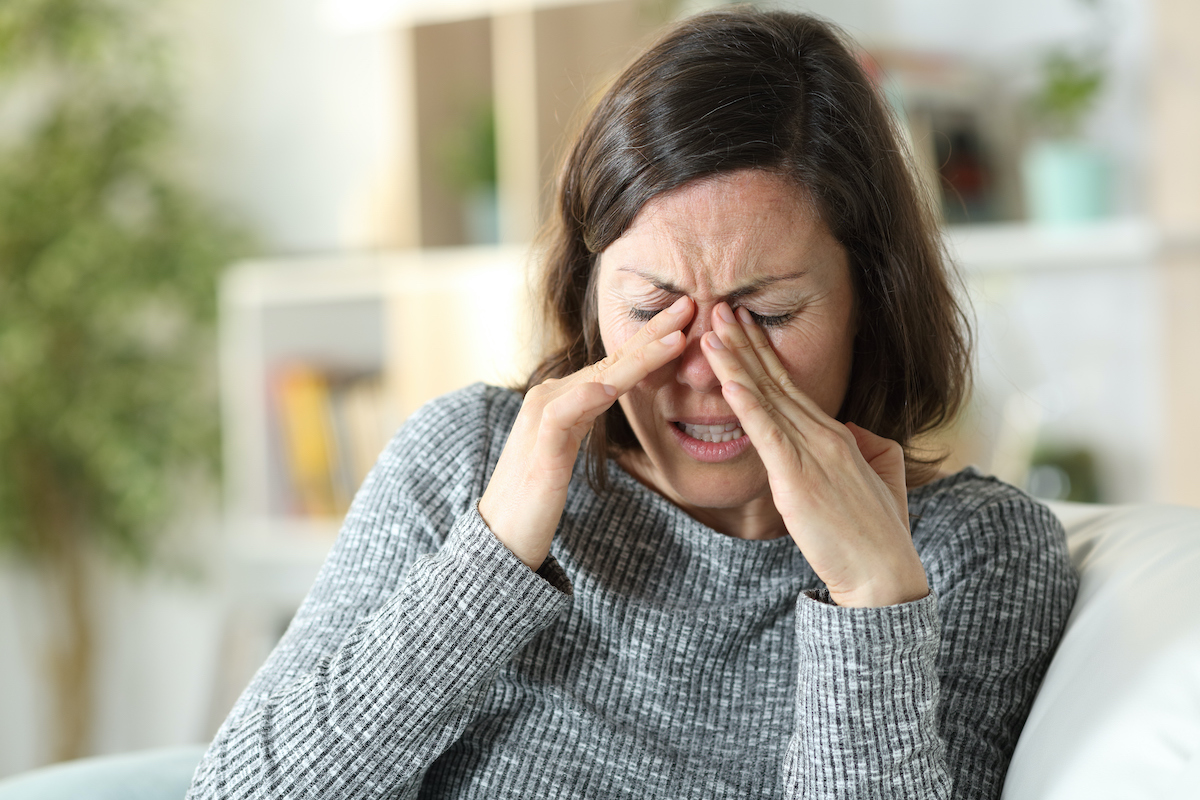
Is it Allergies or Chronic Dry Eye?
Anyone who has ever had dry, itchy eyes for any reason knows how irritating it can be. No matter what you do, the discomfort continues. Your eyes may feel puffy, red, or itchy like there’s a fine layer of sand between your eyelids and eyeballs.
Some people experience these symptoms because they have allergies. When the allergen dissipates, so does their dry eye.
However, many people attribute their dry, itchy eyes to allergies, when in reality their prolonged symptoms are actually the result of a condition known as chronic dry eye. This misunderstanding leads them to suffer from dry eye symptoms for much longer than they should. Although chronic dry eye is treatable, it will not go away on its own and needs to be managed with the help of a doctor or ophthalmologist before you can find relief.
Today, we’ll show you how to tell the difference between allergies and chronic dry eye, and what you can do to get relief in either situation.
What is Chronic Dry Eye?
Even though they may feel similar, chronic dry eye and allergy-related dry eye occur because of two very different reasons. When we have allergies, our dry eyes are caused by our body’s natural reaction to contact with the allergen.
It’s a common response seen in people with pollen, pet dander, or dust allergies since it’s so easy for these small particles to make their way into our eyes. When we remove ourselves from the source of the allergen, our symptoms should improve.
However, chronic dry eye occurs when these symptoms persist even after we change our habits or environment. While allergies are caused by external factors, chronic dry eye occurs because of physiological changes in our body that disrupt the natural functioning of our eyes.
Causes of Dry Eye
Several different issues cause chronic dry eye. One of the most common is a shortage of oil in our tear glands, which causes our tears to evaporate faster than normal. This condition, called evaporative dry eye, is most frequently triggered by a blockage in the Meibomian glands, which provide the oil that keeps our tears fluid. Evaporative dry eye is very common and is thought to be responsible for more than 85% of all cases of chronic dry eye.
Another common reason for chronic dry eye is insufficient production of tears. This can occur because of age, a medical condition like lupus or scleroderma, or due to a side-effect from some types of medications.
When Should I Get My Dry Eye Treated?
When you have chronic dry eye, it’s tempting to just use artificial tears so you can carry on with your day. These over-the-counter drops may provide temporary relief, but it’s important to get this condition treated, especially if it persists past your usual allergy season, or goes on even after you’ve changed your habits or environment.
Most people with allergy-related dry eyes will feel that their eyes are itchy, swollen, red, and puffy. However, if you have any of the following symptoms, you should consult a doctor or ophthalmologist right away:
- Stringy mucus secretions
- Problems driving at night
- Light sensitivity
- Eyes that alternate between watery and dry
Your ophthalmologist will perform a comprehensive eye exam to determine whether there are any physiological issues at play. They may also test the volume and quality of your tears, to help determine the best treatment plan.
How to Treat Dry Eye
There are several ways to treat dry eye, depending on what’s causing your symptoms.
Prescription Eye Drops
One of the most common treatments for chronic dry eye is prescription eye drops, which add fluid to the eyes. These drops are designed to be used regularly, even when you feel normal, to help keep the eyes moist.
Eyelid Scrubs
If debris or mucus is blocking your Meibomian glands, your doctor or ophthalmologist may suggest an eyelid scrub. This gently removes build-up from your eyelashes and eyelids, unblocking the glands and keeping your eyes healthy.
Lipiflow
If your Meibomian glands are continually blocked and you’ve been dealing with dry eyes as a result of poor-quality tears, your ophthalmologist may suggest Lipiflow. This procedure uses safe Vectored Thermal Pulsation (VTPTM) technology to clear out the Meibomian glands using an effective combination of heat and massage.
Punctal Occlusion
Don’t produce enough tears? Your ophthalmologist may recommend a procedure called punctal occlusion, which blocks or obstructs some of your tear ducts. This causes the patient’s tears to pool in the eye longer, which helps keep the eyes moist.
Both punctal occlusion and Lipiflow are great options for when lifestyle and habit changes have not worked. These procedures are quick and painless, and patients can go home as soon as the treatment is finished.
Visit Abrams Eye Institute to Get Relief from Dry Eye
Whether your dry eyes are a result of allergies, a gland blockage, or tear production slowing down, it’s important to take your symptoms seriously. Otherwise, dry eyes can cause serious complications, leading to infections, inflammation, ulcers, and an overall decrease in your quality of life.
At Abrams Eye Institute, patients with dry eye can meet with one of our trained ophthalmologists to get a diagnosis, so they can get relief fast. We have clinics all over Nevada, including in Las Vegas, Henderson, and Pahrump, and we’ve been working together to encourage better eye health since 2005. Schedule an appointment today to get all your dry eye symptoms taken care of.

